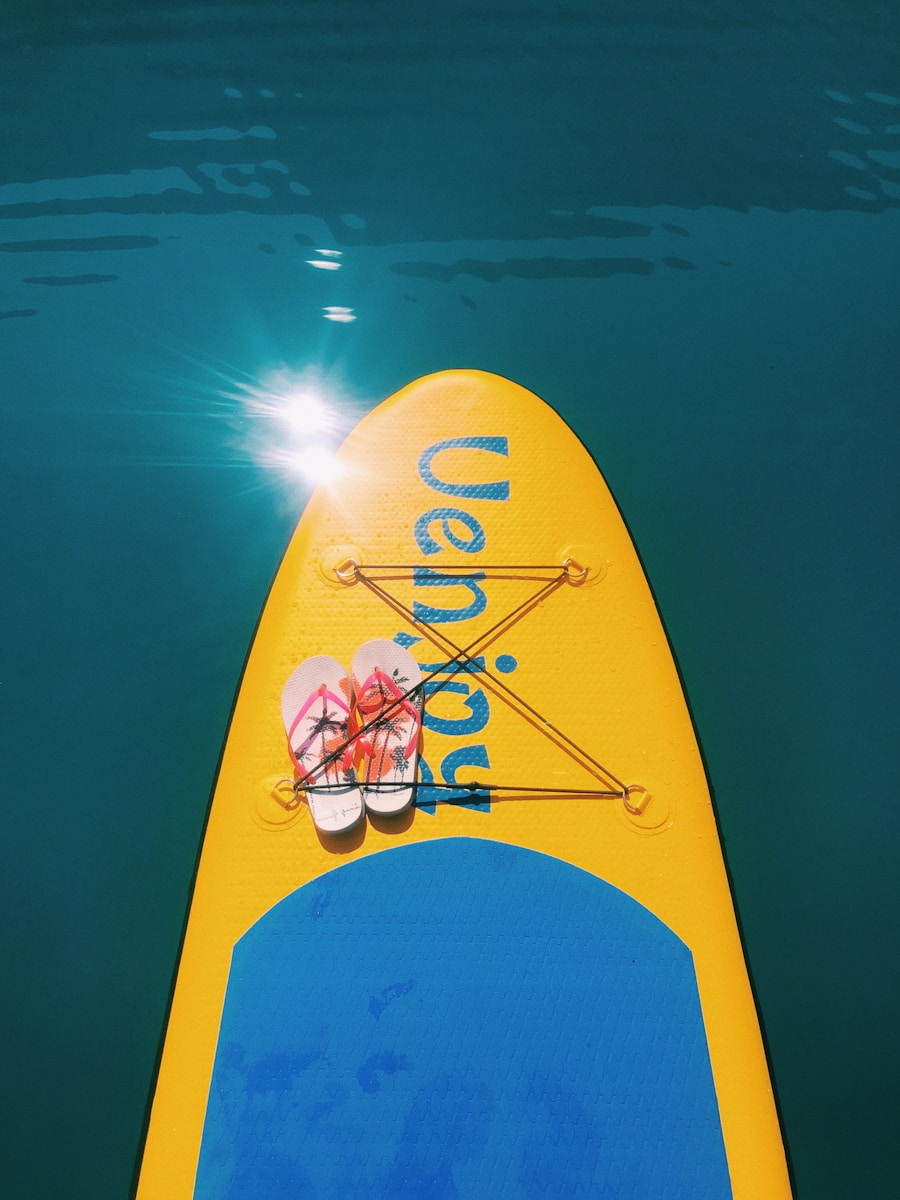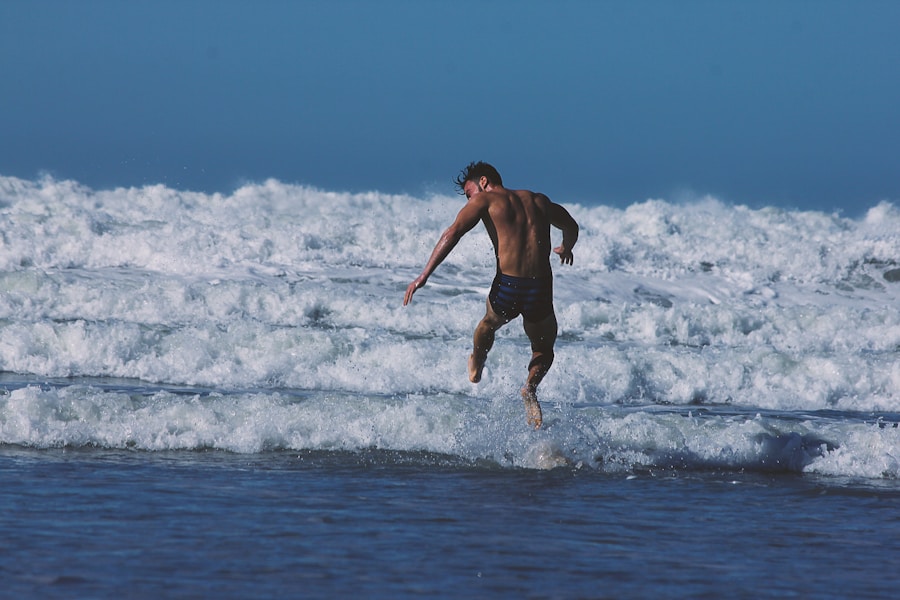Download links
How to install Surfing Makes Historic Debut at Olympics APK?
1. Tap the downloaded Surfing Makes Historic Debut at Olympics APK file.
2. Touch install.
3. Follow the steps on the screen.
Description
The journey of surfing to Olympic inclusion is a tale of passion, perseverance, and the relentless pursuit of recognition for a sport that has long been associated with freedom and expression. Surfing, which originated in ancient Polynesia, has evolved over centuries into a global phenomenon, captivating millions with its blend of athleticism and artistry. The push for surfing to be included in the Olympic Games gained momentum in the early 21st century, driven by the International Surfing Association (ISA) and a growing community of surfers who believed that their sport deserved a place on the world stage.
In 2016, the International Olympic Committee (IOC) officially recognized surfing as an Olympic sport, a decision that marked a significant milestone in its history. This recognition was not merely ceremonial; it was the culmination of years of advocacy and strategic planning by the ISA, which worked tirelessly to demonstrate surfing’s global appeal and competitive nature. The inclusion of surfing in the Tokyo 2020 Olympics was a watershed moment, as it represented not only the sport’s acceptance by traditional sporting institutions but also its potential to inspire a new generation of athletes.
The decision was influenced by the IOC’s desire to attract younger audiences and diversify the Olympic program, aligning perfectly with surfing’s vibrant culture and youthful spirit.
Key Takeaways
- Surfing’s inclusion in the Olympics is the result of a long journey towards recognition and acceptance as a legitimate sport on the global stage.
- The surfing event at the Olympics will feature a unique competition format that emphasizes individual performance while also showcasing the sport’s cultural and environmental aspects.
- The athletes competing in surfing at the Olympics represent a diverse group of individuals from different backgrounds, each with their own inspiring stories and achievements.
- The venue for the surfing competition at the Olympics is a world-renowned surf spot that will provide a stunning backdrop for the athletes to showcase their skills.
- Surfing’s inclusion in the Olympics is expected to have a significant impact on the sport’s growth, visibility, and accessibility, both at the competitive level and within the broader community of surfers and fans.
- The debut of surfing at the Olympics is likely to shape the sport’s future evolution, influencing everything from training and competition standards to its cultural and environmental significance.
The Surfing Event: A Breakdown of the Competition Format
The surfing competition at the Olympics is designed to showcase the skill, creativity, and athleticism of the surfers while adhering to a format that emphasizes both individual performance and competitive spirit. The event is structured into heats, where surfers compete head-to-head in a series of rounds leading up to the finals. Each heat typically consists of four surfers who are judged based on their performance over a set period, usually 30 minutes.
The scoring system is intricate, with judges evaluating each wave ridden on criteria such as difficulty, innovation, and overall execution. Surfers are allowed to catch multiple waves during their heats, but only their best two scores are counted towards their total. This format encourages surfers to take risks and push their limits, as they must balance the need for high-scoring maneuvers with the strategic decision of when to catch waves.
The competition culminates in knockout rounds, where the top performers advance until only two remain to battle for gold and silver medals. This elimination format adds an element of drama and excitement, as surfers must not only excel individually but also outperform their peers in high-pressure situations.
The Athletes: Profiles of the Surfers Making History at the Olympics

As surfing made its Olympic debut, a diverse array of athletes emerged as representatives of this dynamic sport, each bringing their unique backgrounds and styles to the competition. Among them was Carissa Moore from Hawaii, a three-time world champion known for her powerful and fluid surfing style. Moore’s journey to the Olympics was marked by her dedication to the sport and her commitment to inspiring young female surfers around the world.
Her presence in Tokyo symbolized not just her personal achievements but also a broader movement towards gender equality in sports. On the men’s side, Gabriel Medina from Brazil stood out as one of the most accomplished surfers in history.
His journey from humble beginnings in São Paulo to Olympic glory exemplifies the transformative power of surfing as both a sport and a lifestyle. The stories of these athletes resonate deeply within the surfing community, highlighting themes of resilience, cultural identity, and the pursuit of excellence.
The Venue: Exploring the Surfing Location for the Olympic Games
| Location | Features | Wave Quality | Water Temperature |
|---|---|---|---|
| Tsurigasaki Beach, Japan | Sandy beach, consistent waves, offshore winds | Consistent and powerful waves | 20-24°C (68-75°F) |
The surfing events for the Tokyo 2020 Olympics were held at Tsurigasaki Beach, located in Chiba Prefecture, approximately 40 kilometers east of Tokyo. This venue was chosen not only for its picturesque setting but also for its consistent wave conditions that are ideal for competitive surfing. Tsurigasaki Beach is known for its powerful swells generated by typhoons and seasonal winds, providing surfers with challenging yet exhilarating conditions that test their skills.
The choice of Tsurigasaki Beach also reflects a broader trend in Olympic venues that prioritize natural environments over constructed arenas. This decision aligns with surfing’s ethos of harmony with nature and respect for oceanic ecosystems. The beach itself became a vibrant hub during the Olympics, attracting fans from around the world who came to witness history in the making.
The stunning backdrop of the Pacific Ocean served as a reminder of surfing’s deep-rooted connection to nature and its cultural significance as a sport that celebrates freedom and adventure.
The Impact: What Surfing’s Inclusion Means for the Sport and its Community
The inclusion of surfing in the Olympics has far-reaching implications for both the sport itself and its global community. For many surfers, this recognition elevates their passion from a lifestyle choice to a legitimate athletic pursuit deserving of respect and support. It opens doors for increased funding, sponsorship opportunities, and media coverage that can help grow grassroots programs aimed at nurturing young talent.
As more people become aware of surfing as an Olympic sport, interest in surf culture is likely to expand beyond traditional coastal communities. Moreover, Olympic inclusion has sparked conversations about sustainability and environmental stewardship within the surfing community. Surfers have long been advocates for ocean conservation, and this platform allows them to amplify their message on a global scale.
Initiatives aimed at protecting marine ecosystems are gaining traction as surfers leverage their visibility to promote awareness about climate change and pollution. The Olympics serve as a catalyst for these discussions, encouraging athletes and fans alike to engage in meaningful actions that benefit both their sport and the planet.
The Future: How Surfing’s Debut at the Olympics Will Shape the Sport’s Evolution

The Globalization of Surfing
As more countries recognize surfing as a viable sport for competition, we can expect an influx of talent from diverse backgrounds and regions. This globalization will enrich the competitive landscape, introducing new styles and techniques that challenge traditional norms within the sport.
Professionalization and Innovation
National federations are likely to invest more resources into developing training programs and facilities, further professionalizing surfing as an athletic discipline. Additionally, the Olympic spotlight may lead to innovations in equipment and training methodologies tailored specifically for competitive surfing. As athletes strive for excellence on such a prestigious stage, advancements in technology—ranging from surfboard design to performance analytics—will likely emerge.
A Cultural Shift in Sports
These developments could enhance not only competitive performance but also safety measures for surfers navigating increasingly unpredictable ocean conditions. In conclusion, surfing’s journey to Olympic inclusion is not merely about medals or accolades; it represents a significant cultural shift within sports that embraces diversity, environmental consciousness, and community engagement. As we witness this evolution unfold, it is clear that surfing will continue to inspire generations while remaining deeply rooted in its rich heritage and connection to nature.
If you’re a fan of surfing and are excited about the sport making its debut at the Olympics, you may also be interested in checking out the article “Top Surfing Apps to Enhance Your Experience”. This article discusses various apps that can help surfers track waves, improve their skills, and connect with other surfers. It’s a great resource for anyone looking to take their surfing to the next level.
FAQs
What is surfing in the Olympics?
Surfing is a sport that involves riding ocean waves on a surfboard. In the Olympics, surfing is a competitive event where athletes showcase their skills in riding waves.
When was surfing introduced to the Olympics?
Surfing was introduced to the Olympics for the first time in the 2020 Tokyo Olympics. It was included as a new sport to attract a younger audience and promote diversity in the games.
How is surfing judged in the Olympics?
Surfing in the Olympics is judged based on the athletes’ ability to perform maneuvers on the waves, their style, and their overall performance. Judges score each ride based on criteria such as difficulty of maneuvers, speed, power, and flow.
What are the rules and regulations for surfing in the Olympics?
The rules and regulations for surfing in the Olympics are set by the International Surfing Association (ISA) and the International Olympic Committee (IOC). These rules govern aspects such as wave selection, time limits for rides, and athlete conduct.
Which countries are known for their strong surfing teams in the Olympics?
Countries with strong surfing teams in the Olympics include Australia, the United States, Brazil, and Japan. These countries have a rich surfing culture and produce top-level surfers who compete at the highest level in the Olympics.
What are the different events in surfing at the Olympics?
In the Olympics, surfing consists of men’s and women’s individual events. Each event features a series of heats where surfers compete head-to-head, with the top performers advancing to the next round until the medal matches.





